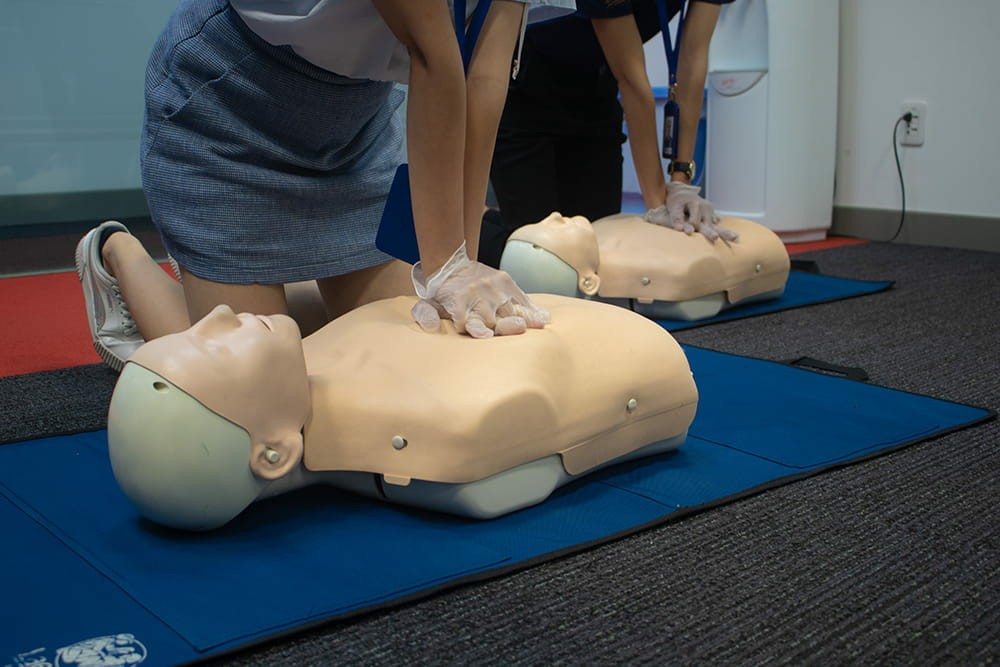Empower Your Workplace: The Indispensable Benefits of First Aid & CPR Training
In today’s fast-paced working environment, emergencies can arise unexpectedly, making the ability to respond quickly and effectively vital for safeguarding lives. First Aid and CPR training are not merely beneficial; they are essential skills that every employee should possess. This blog will explore the importance and numerous benefits of completing a First Aid and CPR training course, confirming why individuals and organizations alike must prioritize this training.
The Importance of First Aid and CPR Training for Safety and Emergency Preparedness
Emergencies can occur anytime, whether in a bustling office, a manufacturing setting, or healthcare facilities. Having staff trained in First Aid and CPR ensures that basic emergency response measures are in place, directly contributing to a safer workplace. Here’s why investing in First Aid training is crucial:
- Immediate Response: Training equips employees with the knowledge to take swift action during medical emergencies, enhancing outcomes.
- Confidence and Competence: Certified training instills confidence in employees, enabling them to respond effectively under pressure.
- Creating a Safety Culture: With trained individuals, organizations foster an environment prioritizing safety, reducing the likelihood of accidents.
- Community Responsibility: Knowing how to perform First Aid not only benefits colleagues but also clients, visitors, and the wider community in emergency situations.
Critical First Aid Skills Every Workplace Should Implement
Employees should gain a comprehensive set of emergency First Aid skills that address various scenarios. Here are some essential skills covered in a standard First Aid course:
- Assessment of the Situation: Understanding how to quickly evaluate and manage emergencies.
- Basic First Aid Procedures: Treating cuts, burns, sprains, and various injuries that may occur at work.
- CPR Techniques: Learning how to perform CPR can save lives during cardiac emergencies.
- Choking Relief: Knowing how to assist someone choking, potentially saving their life.
- First Aid Kit Usage: Familiarity with the contents of a First Aid kit and their effective use.
Understanding CPR: Essential Techniques for Workplace Emergencies
Cardiopulmonary Resuscitation (CPR) is a critical skill taught in First Aid training. It involves a combination of chest compressions and rescue breaths aimed at restoring blood circulation and breathing in someone who has stopped breathing or whose heart has stopped beating. Here are some key aspects of CPR training:
- Recognizing Cardiac Arrest: Understanding when to initiate CPR is crucial.
- Proper Techniques: Learning the correct hand positioning and compression depth can increase the chances of survival.
- Using AEDs: Many courses also teach how to use Automated External Defibrillators (AEDs), devices that can restore normal heart rhythm.
How First Aid Certification Ensures Workplace Health & Safety Compliance
Many industries require compliance with health and safety regulations, making First Aid training a legal requirement. Here’s how training contributes to compliance:
- Meeting Legal Standards: Employers protect themselves against potential liabilities by ensuring that a certain number of employees are trained in First Aid.
- Emergency Preparedness Plans: Incorporating trained staff into workplace emergency procedures enhances preparedness and efficiency during unexpected events.
- Documentation and Reporting: Training helps with accurate documentation of incidents and maintaining compliance with health and safety guidelines.
Emergency First Aid Procedures: Step-by-Step Guide for Immediate Action
In emergencies, knowing the steps to take can make all the difference. Here’s a brief overview of the first response actions employees could use:
- Assess the Scene: Ensure it’s safe to approach the victim.
- Check for Responsiveness: Gently shake the person and ask if they are alright.
- Call for Help: If unresponsive, call emergency services immediately or ask someone else to do so.
- Perform CPR if Necessary: Initiate CPR if the person is not breathing.
Choosing the Best First Aid Training Course for Your Employees
When selecting a First Aid course, consider the following:
- Reputation of the Training Provider: Choose certified providers with good reviews.
- Course Content: Ensure the course covers all required skills, including CPR and emergency response procedures.
- Flexible Formats: Opt for online First Aid courses to provide training solutions that fit your team’s busy schedules.
- Certification: Verify that the course offers recognized certification upon completion.
Advantages of Online First Aid and CPR Training for Busy Teams
Online First Aid training has gained popularity due to its accessibility and flexibility:
- Convenience: Employees can complete the training at their own pace, fitting it into their schedules.
- Interactive Learning: Many online courses use simulations and videos to enhance learning, making it engaging.
- Cost-Effectiveness: Online courses can reduce costs associated with travel and time away from work.
Conclusion & Call to Action
The importance of First Aid and CPR training cannot be overstated. By equipping your workforce with these life-saving skills, you not only enhance workplace safety but also ensure compliance with health regulations, reduce liability risks, and promote a culture of preparedness.
Start empowering your team today! Enroll in a certified First Aid and CPR training course to ensure you are ready to respond effectively in emergencies. For further inquiries, feel free to contact us at [email protected].



 349,500 Offered Certificates
349,500 Offered Certificates
 24/7 Online Training
24/7 Online Training
 Money Back Guarantee
Money Back Guarantee
 Fully Accredited Courses
Fully Accredited Courses
